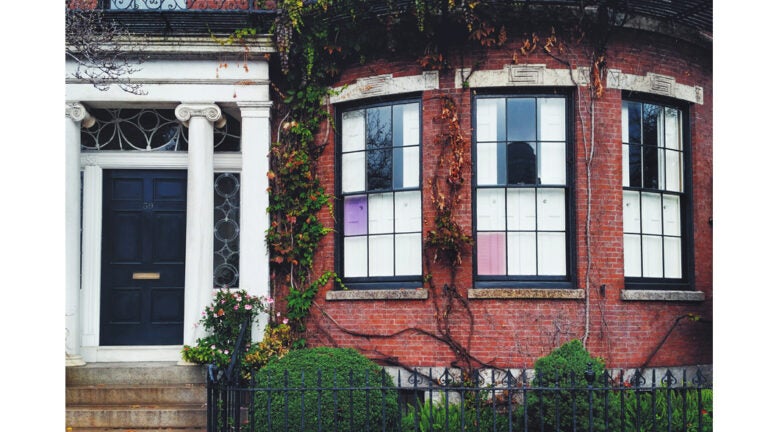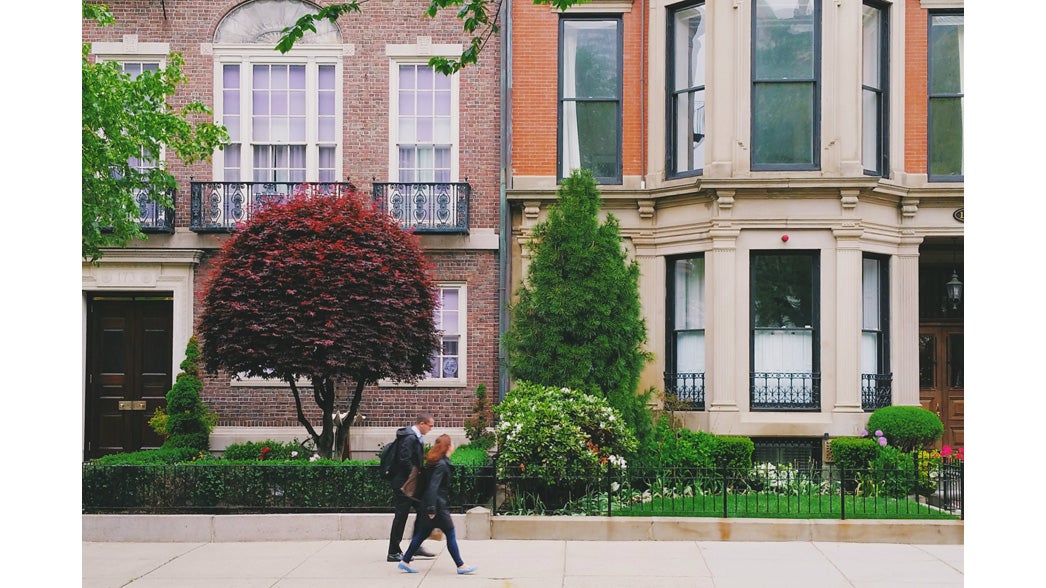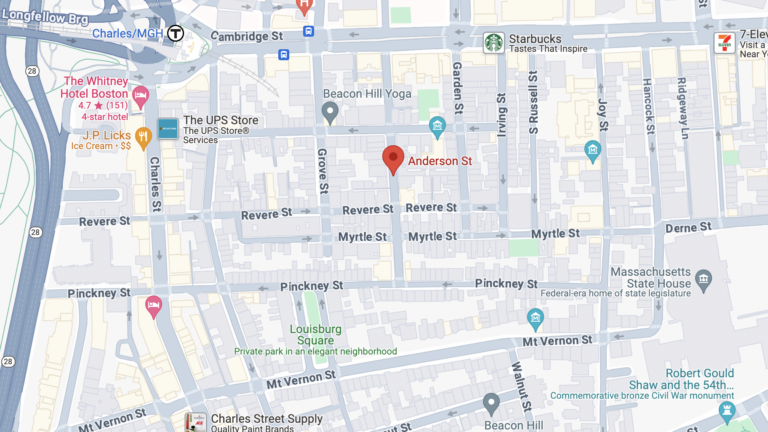Newsletter Signup
Stay up to date on all the latest news from Boston.com

Long before Birkin bags or TikTok’s “quiet luxury” trend, Boston’s blue bloods were making a subtle fashion statement of their own through window panes — purple ones, to be exact.
Struck by sunlight, this glass glowed brilliant shades of amethyst, heather, and lilac — a true splendor to behold, and a prized possession for the Boston Brahmin and Mayflower types of Beacon Hill.
Of course, that wasn’t always the case.
According to Boston legend, the “Lavenders” date back to around 1818 to 1824, when an English importer brought over a shipment of glass that was used to outfit several of the homes in Beacon Hill. While the panes arrived crystal clear, they soon turned a rosy mauve.
The culprit? Manganese oxide, a chemical compound used to remove the greenish tint common in old-school glass manufacturing (think: vintage Coca-Cola bottles). As the Corning Museum of Glass notes, manganese-laced glass has an unusual tendency to turn various shades of purple when exposed to ultra-violet light.
And needless to say, Beacon Hill’s wealthy homeowners were less than amused.
“When the windows were turning purple, people were really offended by it,” says Nicholas Armata, senior preservation planner for Boston’s Landmarks Commission.
But according to Armata — who oversees the Beacon Hill Architectural District — visitors gradually began to associate the purple windows with Beacon Hill’s wealthy residents, turning a chemistry flop into the ultimate status symbol.
“One wonders if there is some subtle and subconscious connection between the ideas of purple glass and blue blood,” Robert Shackleton wrote in “The Book of Boston” in the early 1900s. This “empurpling effect,” as Shackleton called it, had become a point of distinction for Beacon Hill.
“Just why it should be a matter of special pride to have too much foreign substance in one’s window glass it is hard for even the Bostonians to explain, for they realize that the houses are just as old, and would look just as old, without the purple panes,” Shackleton mused. “But none the less, to them it represents vitreous connection with a proud and precious past.”
By the time Beacon Hill’s residents decided they actually liked the Lavenders, the original batch of manganese oxide glass had been discontinued and broken panes had to be swapped out for clear replacements, Armata explained.
“If you look at the windows throughout the neighborhood and beyond, you’ll notice that a lot of them, it’s only a couple of window panes on a specific window that are purple,” he said. “That’s because when this shipment came over, people were really upset that this glass was turning purple. It was a defect; it was weird. It was not what was expected.”
Yet by 1917, the purple glass was so highly sought after that architect J. Harleston Parker apparently used his professional connections to get his hands on a stash of old glass for his home at 173 Commonwealth Ave. in Back Bay, Boston.com reported in 2015.
According to Armata, non-original purple glass can also be seen in a small oriel at 70 Beacon St., a later addition and a nod to Victorian tastes. (For the record, he counts 29 Chestnut St. and 39-40 Beacon St. as some of his favorite locations to spot purple panes.)
Centuries later, the purple windows of Beacon Hill remain not only a selling point, but also a striking spectacle.
“When the afternoon sun casts its rays on Beacon Hill, dignified red brick buildings, wearing the Bulfinch look, are suddenly aglow with myriad colors ranging from delicate amethyst to rose violet to deep heliotrope,” Margaret Mary Dunn wrote in a 1961 article for Yankee magazine. “Seen for the first time, the effect is startling, utterly fantastic, even confusing.”

The Lavenders’ romantic appearance also gave way to tall tales; according to Dunn, one version of the origin story ascribed a therapeutic effect for rheumatism-afflicted seniors who sunned themselves in the purple windows’ light.
Healing properties aside, the windows are an undeniably enchanting feature of Beacon Hill, a neighborhood with no shortage of charming scenes.
“Here visitors stroll, camera in hand, trying to capture the astonishing loveliness of this unexpected fairyland of shimmering lilac sun-splashed marvel, more dazzling and beautiful in the late afternoon sun than a case full of diamonds,” Dunn effused.
As Armata explained, the purple windows’ longevity is a testament to both historic preservation and the sturdier old-growth wood used to build their frames.
The purple windows “kind of grew into a status symbol, and today, anyone that sees these thinks they’re really a piece of quirky Boston history,” Armata said. “And they really, at the end of the day, are the essence of historic preservation.”
Stay up to date on all the latest news from Boston.com

Stay up to date with everything Boston. Receive the latest news and breaking updates, straight from our newsroom to your inbox.
Conversation
This discussion has ended. Please join elsewhere on Boston.com